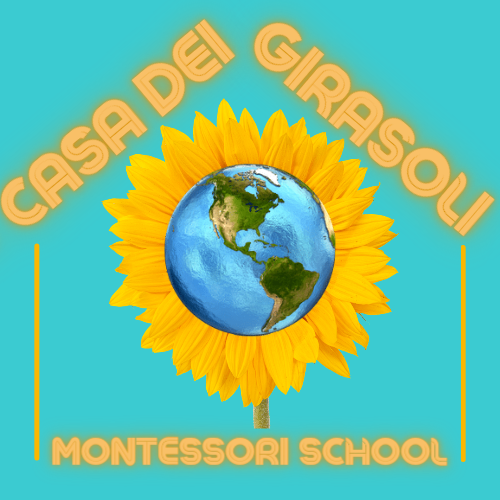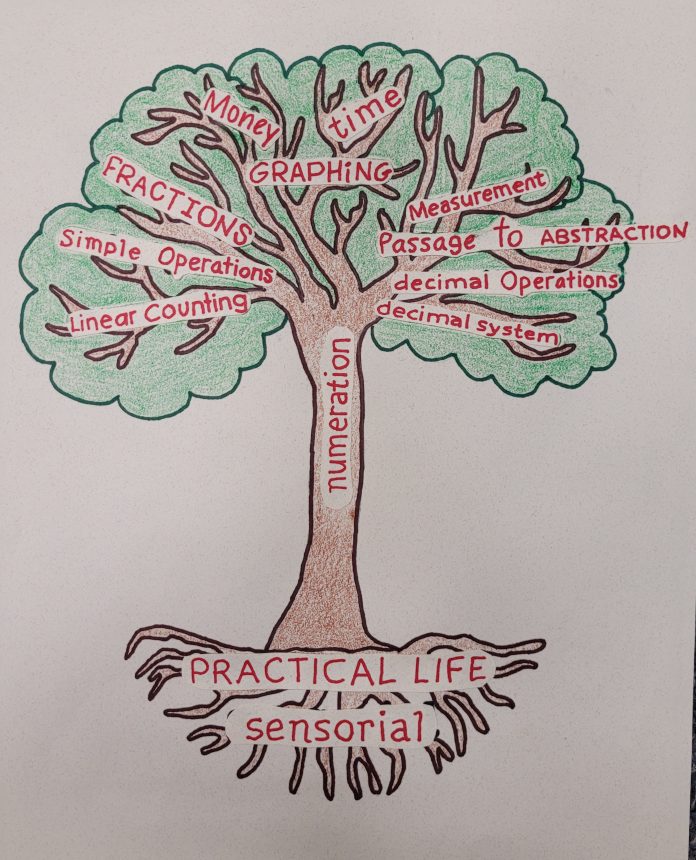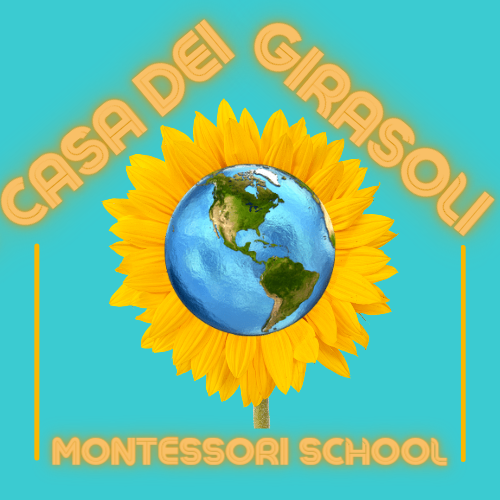Practical Life
Practical Life is the heart of the Primary Montessori classroom. It is the area that bridges the gap between home and school. It is also where the child develops the skills needed to complete lessons in other areas of the classroom. Practical life works are unique in that they are child sized, beautiful, have a control of movement, and are always in working order. Practical life can be broken into five categories: grace and courtesy, fundamental skills, care of person, care of the environment, and food preparation. These holistic works pave the way for the child to succeed at everyday tasks and advance throughout the Montessori curriculum.
Built into every practical life lesson is what is known as the hidden curriculum. This includes skills of concentration, coordination, order, and independence (often referred to as CCOI).There is the practical and obvious purpose of each lesson, and then there is the hidden curriculum behind it. This means that even in the most seemingly simple task, a child is developing multiple skills. Concentration comes from the repetitive nature of practical life activities. The children are drawn into the lessons because they are real and beautiful. They continue doing the work because they enjoy it. They become enthralled in the lesson, thereby developing a deep sense of concentration. Coordination starts from the simple task of carrying the lesson from the shelf to the table. It then becomes more attuned with the fine motor lessons that make up the primary practical life curriculum. Lessons are arranged on the shelf from left to right, top to bottom, and simple to complex to help the child develop a sense of order. Independence is derived from the fact that the lessons are designed for the child to complete on their own. After the initial presentation from the guide, the child is able to practice the skills independently. These lessons also give them more independence in the world because they have the knowledge and muscles to do things for themselves.

Sensorial
The Sensorial area is where the child learns to experience the world. Maria Montessori put a lot of time and thought into this particular area. The materials designed for this curriculum were originally crafted by local woodworkers after careful observations by Dr. Montessori. Sensorial lessons demonstrate materialized abstraction for students to explore using their senses of sight, touch, taste, smell, and hearing. Through exploration and comparing and contrasting, children develop the higher level thinking required for the mathematical mind.
Dr. Montessori observed that children go through developmental “sensitive periods” in which their brains are ready to take in specific information. The Sensorial area appeals to the children going through the sensitive periods for order, movement, exploration and refinement of the senses, small details, language development, music, mathematics, and spatial relationships. Children develop a sense of order as they grade materials by size. Taking out sensorial objects requires a lot of movement to and from the shelves. Refined movements are necessary for manipulating materials like the knobbed cylinders, carefully stacking the cubes, and exploring the geometric cabinet. The exploration and refinement of the senses is the entire basis of the Sensorial materials.
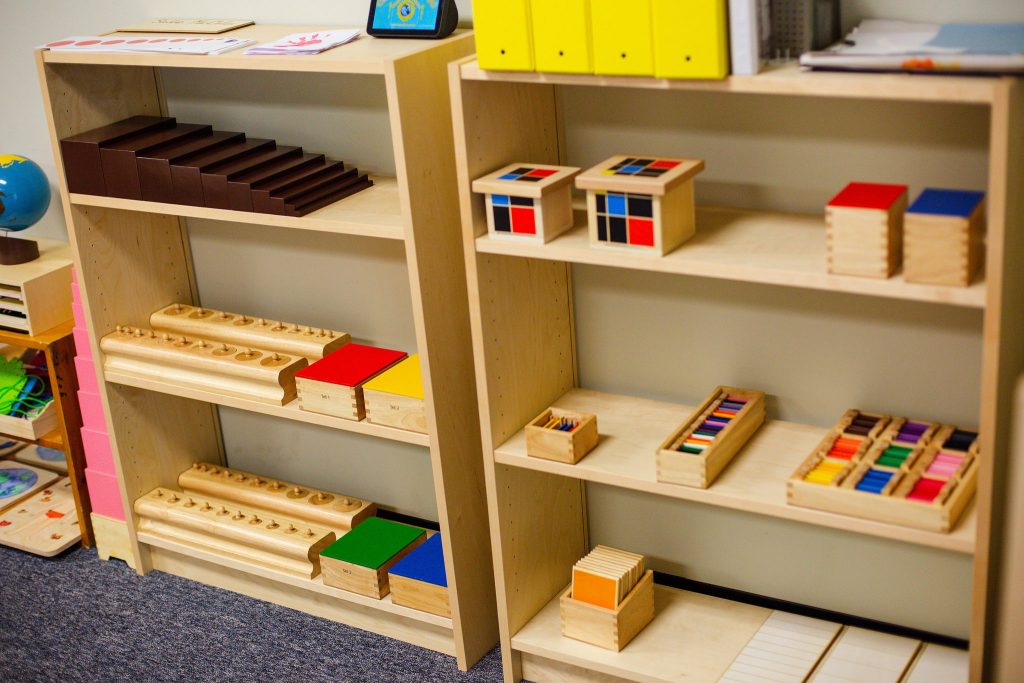
Mathematics
The Mathematics area is where children learn and manipulate quantities of numbers and their symbols. It is defined by a body of knowledge centered on concepts While the materials in other areas follow a more strict sequence from left to right, the math sequence can be described using a metaphor of a tree. The roots for math are planted within the Practical life and Sensorial areas. That is where the children learn the concentration, coordination, order, and independence needed to complete mathematical lessons. The Sensorial area is also where the child learns to sort and organize, thereby learning to observe and differentiate. The trunk of the tree is where a child learns the numbers and symbols for 1-9. He learns one to one correspondence and counting. These skills are used for the rest of the math lessons. From there, the curriculum branches out into categories of linear counting, simple operations, fractions, measurement, time, money, decimal operations, and a decimal system. Within each of those branches, there is still a sequence moving from the concrete to the abstract; but a child does not have to move through the branches in a particular order. Moreover, a child can be working on skills within different branches at the same time.
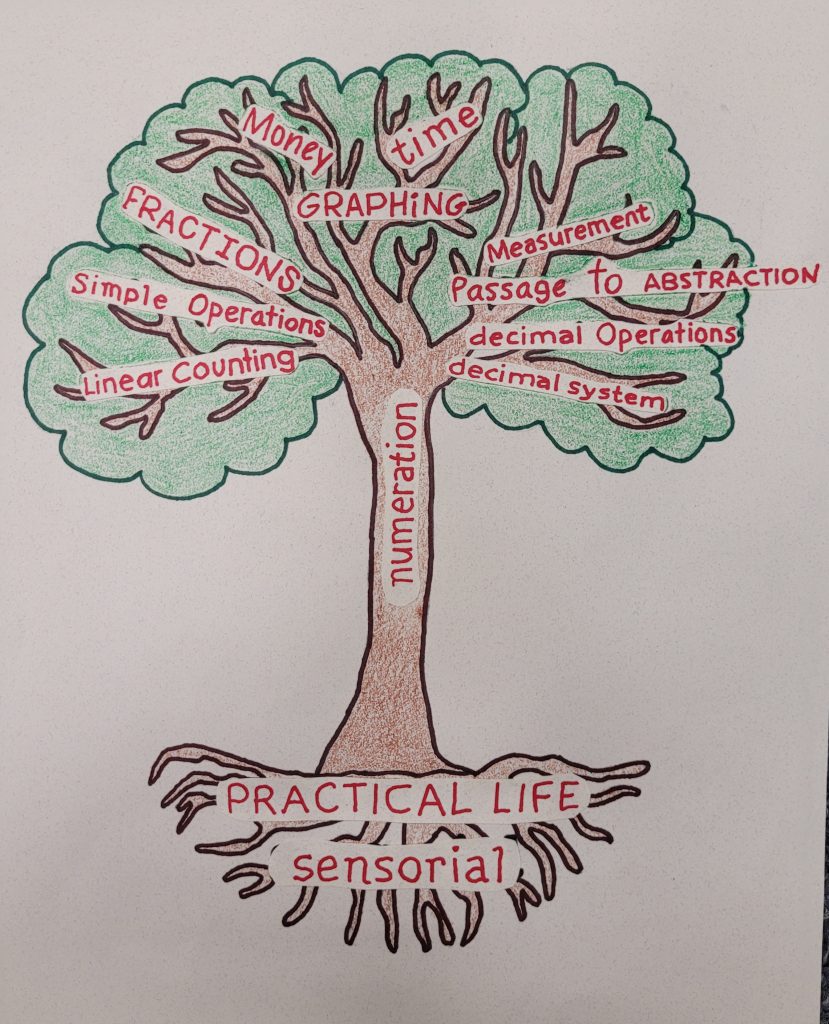
Language
Montessori environments are rich in language activities, both on and off the shelves. Although Maria Montessori only created three materials for this curriculum area (metal insets, sandpaper letters, and the movable alphabet), it remains one of the core subjects. Language development consists of activities in listening, speaking, writing, and reading. This is an area where the guide has a lot of room to customize the works to the interests of the children in the class.
Maria Montessori understood that writing goes beyond just the physical act of writing. She created materials to allow the children creative expression, even before they had the fine motor skills to accomplish physical writing. The movable alphabet gives children a chance to manipulate sounds and build words, without ever having to touch a pen or paper. The pincer grip and fine motor skills needed for motoric writing are developed in the Practical Life and Sensorial areas. The children learn to manipulate tools and tiny objects through purposeful play. Those skills are then strengthened even more through activities like the metal insets, push pinning, tracing the sandpaper letters, and writing in sand trays.
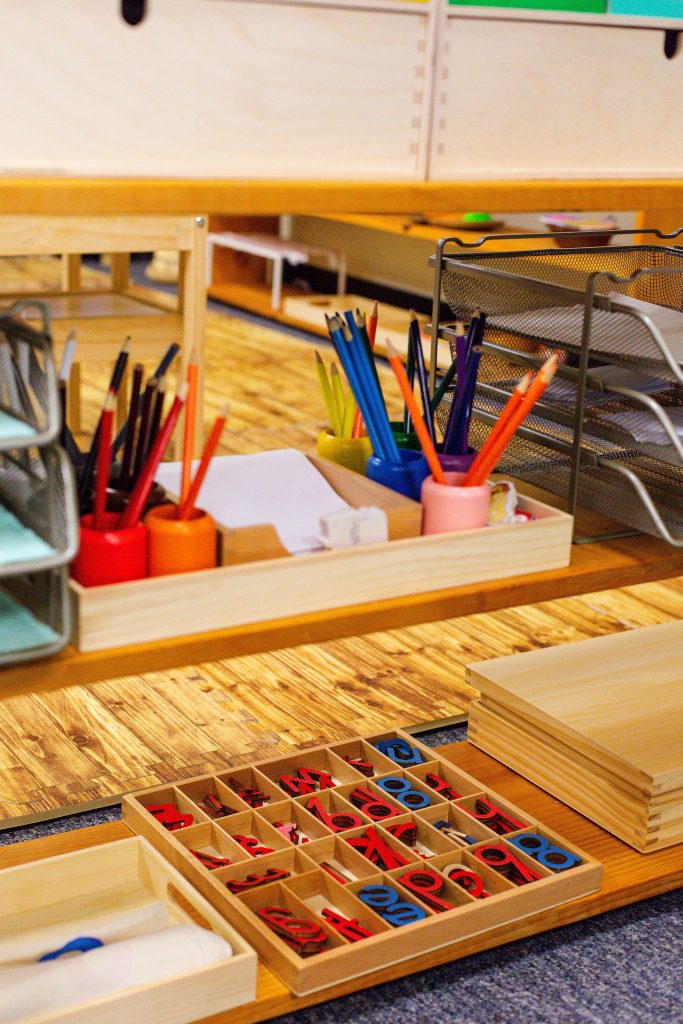
Cosmic
The Cosmic area combines culture and science. In the Montessori classroom, children are exposed to cultures all over the world. They explore political boundaries with puzzle maps of each of the continents. They learn about food, clothing, rituals, and lifestyles of people all over the world through pictures, art, music, and experiences brought into the classroom. They learn about biomes and habitats of different areas. Nature is brought into the classroom by having classroom pets, growing plants, and finding artifacts in nature. Children in a Montessori environment learn what it means to be “global citizens”.



